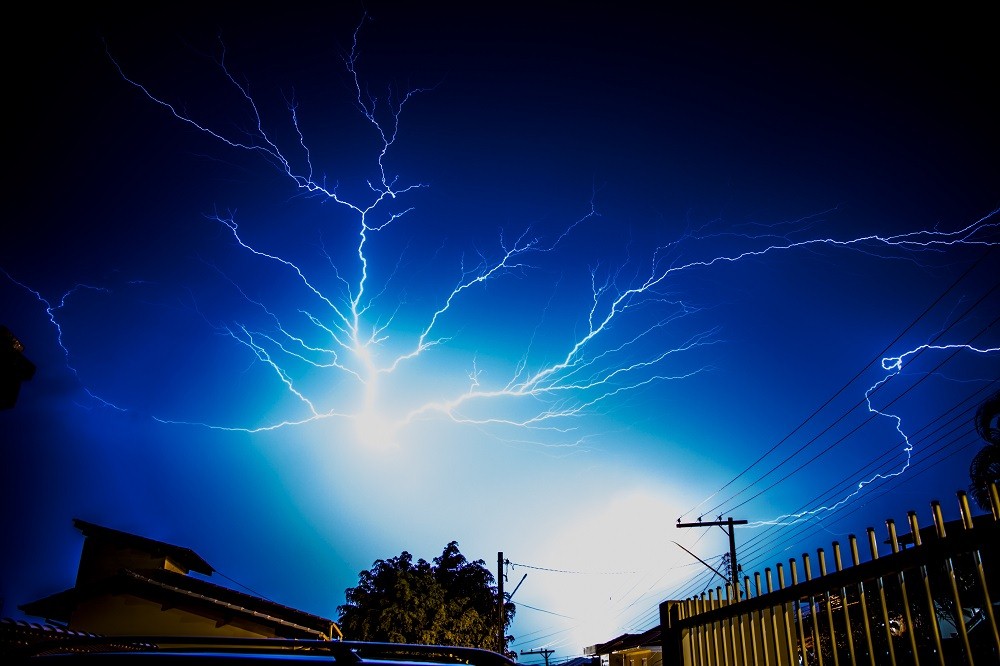Copper is highly regarded by craftsmen and artisans for its excellent properties, such as corrosion resistance, electrical or thermal conductivity, and ease of fabrication. One often overlooked trait of this material, however, is its propensity for lightning protection. What many don’t know is that when copper roofing is used in conjunction with lighting protection systems made of copper components in the gutters, rain leaders and wall claddings, it serves as an ideal lightning damage deterrent.

Lightning Damage
It’s a universal fact that lightning is severely dangerous when it strikes, but how much damage does it inflict on structures? According to research compiled by the Insurance Information Institute, the homeowners insurance claims from lightning strikes and electrical surges saw a huge increase in 2016 compared to 2015. A 4.5 percent change in claims now puts the total payout for lightning losses at $825.7 million dollars.
Over fifty percent of the damage is reportedly due to the massive electrical surge that rendered appliances and wiring useless. Transformer and service lines were also disrupted, contributing to the destruction. Lightning fires were also cited as a leading cause of direct property damage to both residential and non-residential properties. In fact, according to the National Fire Protection Association (NAFPA), lightning fires caused an average of $451 million in property damage every year from 2007-2011 alone.
Copper Roofing and Lightning Protection
Perhaps the main reason why some scoff at the idea of installing copper roofing is that they suspect it will only increase the likelihood of lightning strikes. After all, metals are naturally more conducive. In reality, a copper roof will not attract lightning more, but it can make the building a lot more safer. Why? Because copper’s high conductivity allows for fast transmission of energy.
Lightning is defined as a rapid discharge of atmospheric static electricity. It’s a naturally occurring phenomenon that largely depends on geography, topography and the movements of the storm. It will discharge in a predetermined spot whether or not it happens to be a copper roof or a clay roof. Your roofing material of choice, however, will affect how the discharge is handled.
Lightning will seek the path of least resistance, which means that it is more inclined to pass without issue through an excellent conductor like copper rather than wood or concrete. This is precisely why experts say that you are much safer inside your car during a lightning storm than you are standing beside it.
Effective lightning protection systems consist of a copper (or copper alloy) roof, a lightning conductor and a grounding device. The energy first passes through the roof ,and then later redirected to terminals and intercepting conductors. A system of grounded down conductors will then discharge the energy to the earth. As a result, there is no actual danger to human life, especially if the interior of the building is constructed with non-combustible steel. The same goes for electronic equipment that may be sensitive to electrical discharge.
Copper roofing is ideal for large, tall buildings that are located in lightning-prone states such as Florida, Texas, Georgia, Louisiana, North Carolina and California. With materials from a reputable copper sheet supplier like Rotax Metals, you can better guard your properties, its inhabitants and assets against destructive lightning strikes.
Sources:
Lightning Protection, Copper.org
Are Metal Roofs Lightning Magnets?, BDCNetwork.com

